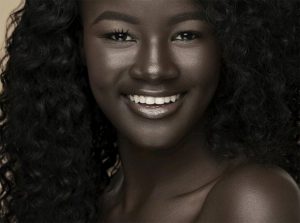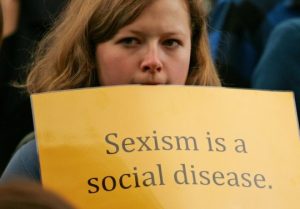Category: Uncategorized
She Got Out
 Elizabeth Smart
Elizabeth Smart
Age when abducted and now
Elizabeth Smart was only 14 when she was kidnapped from her home by Brian David Mitchell. The 52 year old man along with his wife kept Elizabeth captive for over 9 months and police could not locate them because they were holding her at a location in the woods. Now 15 years later she is 29 years old and is married with two children. Her kidnappers are in jail Mitchell is serving a life sentence for abuse, while his accomplice and wife, Wanda Barzee, is serving 15 years for aggravated kidnaping. Smart recounts her times while she was taken by them.
Mitchell aggressively raped her everyday she was held captive by them. She said when he had first taken her she had contemplated suicide since she came from such a religious neighborhood and being raped made her feel devastated. She said “I felt like it would be better to be dead than to continue living being a rape victim, being a rape survivor.” This was only in the beginning, for nine months Mitchell forced Smart to watch pornography and then he repeatedly raped her, aggressively. Finally, she became accustomed to it. What she does believe is that pornography lead Mitchell to be so aggressive. There is no proof on this but she believes watching Pornography led him to raping her more than usual which was already a lot.
 Brian David Mitchell and Wanda Barzee
Brian David Mitchell and Wanda Barzee
Husband and Wife and the Kidnappers
Learned helplessness seems to play a huge roll in this case. Learned Helplessness is when the person eventually believes they cannot be helped due to the fact that all these outside characteristics play a part and they are told nothing will work so they believe it. Smart was held captive for 9 months being raped repeatedly. She even said “I felt in the moment if there had been an easy way out, I probably would have taken it.” This shows that she eventually thought she would not be helped and thinking that she eventually came to terms with the fact that she believed she would not get out.
The second concept that relates to this a great deal is Locus of Control. There is both internal and external locus of control. For internal locus of control it is believed that we have control over what happens to us and for external we believe that outside factors have control over what happens to us. We believe in this situation Smart could have thought she had an External locus of control due to the fact that she could not help what was happening to her; all the way from being kidnapped from her own bed to being raped repeatedly. She probably believed it was all out of her hands; even her escape which is why she had contemplated suicide.
Smart went through a great while being held captive for over nine months. Thankfully she did not let it run her life once she was rescued from the situation but instead embraced it and made the best of her life. Because of that she is married and has two beautiful children. She now has control over her own life.
This is the movie created about this story:
https://tubitv.com/movies/387029/the_elizabeth_smart_story
Citations:
- Maryse Godden. (2017). Elizabeth Smart Contemplated Escape “Porn Addict” Rapist. NY Post. http://nypost.com/2017/09/19/elizabeth-smart-contemplated-suicide-to-escape-porn-addict-rapist/
~Yesim Ekici~
Racism in the Oscars
For many years, racism has been a huge problem in society. This has been an issue for many years, and is something that continues to be a huge issue in society today. This is a huge problem, especially in the field of arts and entertainment.
A place where celebrities face the most racism is at the award ceremonies. Racism is defined as an individual’s prejudicial attitudes and discriminatory behavior toward people of a given race. In these ceremonies, it is usually the white male or female actors/ actresses winning the awards. Black, Hispanic, and other races of celebrities are barely seen winning any of these awards. It is evident that the small number of black/ Hispanic celebrities winning awards at these ceremonies affects them. People tend to look at them lowly, because of the fact that they are not really expected to win. This causes both prejudice (negative prejudgments) and discrimination (negative behaviors) toward people of these races. The people who devalue African Americans are people who have lower career aspirations (Brown). This means that people who are racist tend to be lower on the career spectrum, and that their prejudicial opinions can be the primary cause. When celebrities of these races win awards, such as Oscars, it is not as acknowledged as it should be, or is acknowledged too much but more in a negative way. All actors/ actresses put in the same amount of effort in their work, yet only the white actors/ actresses are acknowledged for their hard work. The lack of attention for black celebrities is something that affects them.
This past year, the Oscars made history with the most black winners ever. Every year since 2007, only one black celebrity has won an Oscar. This year, two black celebrities won Oscars. Although this was not a big number gap, it is still more than the typical one black celebrity who wins an Oscar. The black celebrities who won the Oscars this year are Mahershala Ali (Moonlight) and Viola Davis (Fences). As the years go on, at this rate, more Black/ Hispanic celebrities should be winning more Oscars, and shouldn’t be discriminated against because of their race.
-Tess P.
Works Cited
Brown, Danice L. “African American career aspirations: Examining the relative influence of internalized racism.” PsycINFO, Apr. 2016, web.b.ebscohost.com.rlib.pace.edu/ehost/detail/detail?vid=8&sid=b00fce12-52b2-454c-baf3-6f8d7de256a0%40sessionmgr102&hid=101&bdata=JmxvZ2luLmFzcCZzaXRlPWVob3N0LWxpdmUmc2NvcGU9c2l0ZQ%3d%3d#AN=2016-09071-006&db=psyh.
Nolfi, Joey. “Oscars 2017: History made with most black winners ever.” Entertainment Weekly, 27 Feb. 2017, ew.com/awards/2017/02/26/oscars-2017-black-acting-winners/.
Myers, D. G. (2015). Exploring social psychology. New York, NY: McGraw-Hill Education.
Ingroup Views About Immigrants May Be Wrong
Many Americans are not to fond of immigrants roaming on American soil. Many place immigrants in their own group, and shine a negative light on them. It is believed that immigrants steal American jobs, housing and cause many crimes. Americans can be referred to as the “ingroup” which is the “Us” – a group of people who share a sense of belonging. The immigrants would be referred to as the “outgroup”- a group that people perceive as distinctively different from or apart from their ingroup.
Just this week, U.S Immigration and Customs Enforcement (ICE) data shows that half of immigrants arrested in raids had only traffic convictions or no record at all. Roughly 675 immigrants were picked up in roundups across the US days after President Trump took office. Of those 675 half had no criminal convictions or had committed traffic offense.
Being a part of the ingroup strongly influences how you think about members of the outgroup. The article being a prime example. Many American paint a picture that these immigrants are prevalent to the crimes committed in this country. When in reality immigrants aren’t adding much to the crime rate. This goes to show that ingroup vs. outgroup views can easily blur reality.
Article: https://www.washingtonpost.com/local/social-issues/ice-data-shows-half-of-immigrants-arrested-in-raids-had-traffic-convictions-or-no-record/2017/04/28/81ff7284-2c59-11e7-b605-33413c691853_story.html?utm_term=.ff08eb7282a4
Latajia Cox
Abuse and Neglect at Immigrant Detention Centers
 The article “New SPLC report uncovers abuse and neglect at immigrant detention center in the South,” discusses the discrimination that has been displayed to immigrants since the election of President-elect Donald Trump. The unjustifiable negative behavior toward a group is evident throughout the article and is otherwise defined as discrimination (Myers, D. G., pg. 245- 246). Ever since the election, there have been many arguments about what will happen in United States with President-elect Donald Trump in office. The article examines how Trump’s deportation plan has affected the way immigrants are being treated. The effects of discrimination and racism as portrayed in the article are the prominent cause in the mental and psychological problems in individuals. In the South, as stated in the article, many immigrants that are detained are regularly and frequently denied their due process rights. Not only are these immigrants denied due process rights, they are also physically and mentally abused, as well as being detained in unsanitary environments, and are not being offered proper medical and mental health treatments. Causing severe sufferings and sometimes deaths, these facilitations lack outdoor recreations, leading to more mental and physical deterioration while awaiting their deportation. These conditions afflicted on immigrants affect the health of so many, families and friends are lost and the toll taken on their lives is often unbearable.
The article “New SPLC report uncovers abuse and neglect at immigrant detention center in the South,” discusses the discrimination that has been displayed to immigrants since the election of President-elect Donald Trump. The unjustifiable negative behavior toward a group is evident throughout the article and is otherwise defined as discrimination (Myers, D. G., pg. 245- 246). Ever since the election, there have been many arguments about what will happen in United States with President-elect Donald Trump in office. The article examines how Trump’s deportation plan has affected the way immigrants are being treated. The effects of discrimination and racism as portrayed in the article are the prominent cause in the mental and psychological problems in individuals. In the South, as stated in the article, many immigrants that are detained are regularly and frequently denied their due process rights. Not only are these immigrants denied due process rights, they are also physically and mentally abused, as well as being detained in unsanitary environments, and are not being offered proper medical and mental health treatments. Causing severe sufferings and sometimes deaths, these facilitations lack outdoor recreations, leading to more mental and physical deterioration while awaiting their deportation. These conditions afflicted on immigrants affect the health of so many, families and friends are lost and the toll taken on their lives is often unbearable.
However, these conditions did indeed occur before the President-elect Trump. An individual’s prejudicial attitudes and discriminating behavior toward people or institutional practices that subordinate people of a given race is defined as racism (Myers, D. G., pg. 245- 246). In my opinion, hate groups have always existed in our society and the election of Donald Trump has just made these people feel more comfortable in displaying their hate. People believe because Donald Trump displayed certain attributes, which some consider racist, sexist, etc., that they can display the same. However, the problem in this country comes from the people themselves and NOT who is in office. Speaking to the concept of prejudices, which can be defined as a negative prejudgment, we are taught to hate. Thus applying the perspective of the differential association theory, stating that deviance is learned, and because it is learned, the actions as well as the justifications as to why are also learned. The way we treat each other should not change when presidents change. Some are taking the election of Donald Trump in an absurd and disgusting way by deciding to treat people so poorly for no apparent reason other than the culture they are apart of. This article shows how people can treat each other so terribly and have no remorse for their actions, when the ramifications are detrimental to the health of the one’s they hurt.
Textbook: Myers, D. G. (2012). Exploring social psychology (seventh ed.). New York: McGraw-Hill.
Rabusin, M.
Teen Mental Health Experts Are Worried About “13 Reasons Why’s” Effects
 13 Reasons Why, the Netflix adaption of Jay Asher’s 2007 novel, has schools parents and health care professionals in an uproar. The show is about a teen girl, Hannah, who commits suicide and leaves behind 13 tapes listing off 13 people she feels where responsible for her death. Netflix took on the show stating teen suicide and sexual assault are things that we don’t really talk about, but they happen often. Since there is so much stigma surrounding suicide and sexual assault, teens are afraid to reach out for help when they need it. In several episodes of the Netflix original there are graphic depictions of sexual assault and the last episode shows Hanna’s suicide in graphic detail. They even opted to change the method by which she killed her self in the book, overdosing on pills, for the more dramatic and graphic slitting of her wrists. The directors bold decisions to depict an on screen suicide has many parents and health care professionals worried that this will romanticize and encourage suicide attempts. “Some mental health experts say the show could pose health risks for certain young people, such as those who have suicidal thoughts. Others suggest the show provides a valuable opportunity to discuss suicide risk with young people, as well as teaching them how to identify warning signs of depression or suicidal thoughts among their peers. Among American young people, those between ages 10 and 24, suicide is the third leading cause of death… Each year, about 157,000 people in that age range receive medical care for self-inflicted injuries at emergency departments across the United States”(Howard,). Experts are worried the “suicide contagion” phenomenon will increase these numbers.
13 Reasons Why, the Netflix adaption of Jay Asher’s 2007 novel, has schools parents and health care professionals in an uproar. The show is about a teen girl, Hannah, who commits suicide and leaves behind 13 tapes listing off 13 people she feels where responsible for her death. Netflix took on the show stating teen suicide and sexual assault are things that we don’t really talk about, but they happen often. Since there is so much stigma surrounding suicide and sexual assault, teens are afraid to reach out for help when they need it. In several episodes of the Netflix original there are graphic depictions of sexual assault and the last episode shows Hanna’s suicide in graphic detail. They even opted to change the method by which she killed her self in the book, overdosing on pills, for the more dramatic and graphic slitting of her wrists. The directors bold decisions to depict an on screen suicide has many parents and health care professionals worried that this will romanticize and encourage suicide attempts. “Some mental health experts say the show could pose health risks for certain young people, such as those who have suicidal thoughts. Others suggest the show provides a valuable opportunity to discuss suicide risk with young people, as well as teaching them how to identify warning signs of depression or suicidal thoughts among their peers. Among American young people, those between ages 10 and 24, suicide is the third leading cause of death… Each year, about 157,000 people in that age range receive medical care for self-inflicted injuries at emergency departments across the United States”(Howard,). Experts are worried the “suicide contagion” phenomenon will increase these numbers.
A study published by the Canadian medical association journal in 2013 found that among 12- to 13-year-olds, being exposed to a classmate’s suicide was associated with being five times more likely to have suicidal thoughts. Other age ranges had varying levels of correlation but they overall proved that there is an association between exposure to suicide and suicidality outcomes (Swanson, Colman). Although many people believe this could lead to an increase in suicide that was the opposite of the intentions of the shows writers and producers they want to spread awareness and start a conversation. “One of the writers of the 13 Reasons Why series has defended the decision not to shy away from main character Hannah’s suicide and to include a graphic scene of her death… From the very beginning, I agreed that we should depict the suicide with as much detail and accuracy as possible. I even argued for it… It seemed to me the perfect opportunity to show what an actual suicide really looks like — to dispel the myth of the quiet drifting off. It overwhelmingly seems to me that the most irresponsible thing we could’ve done would have been not to show the death at all” (Howard,). Often times we think of suicide as peaceful because this is how it is presented in film. However, this is not the case. Romanticizing suicide could be due to the fact people have never seen how horrific it actually is. By having this tv show that show what it is actually like to commit suicide will add awareness to the reality and show people it is actually something that happens.
Howard, Jacqueline. “’13 Reasons Why’ Sparks Debate on Teen Suicide.” CNN. Cable News Network, 25 Apr. 2017. Web. 03 May 2017.
Swanson, Sonja A., and Ian Colman. “Association between Exposure to Suicide and Suicidality Outcomes in Youth.” Canadian Medical Association Journal. N.p., n.d. Web. 03 May 2017.
Sexism in the Oscars
It’s no secret that there are significant stereotypes reinforced and institutionalized through the modern media. Stereotypes like women being less qualified to be successful, or receive accolades for their work, are so ingrained in the media that they become solidified as prejudices in society. These prejudices become a factor that everyday people, in this case women, have to live according to in modern society. Even high profile celebrities end up being affected by these standards: including Academy Award winning Barbra Streisand.
Sexism is defined as “institutional practices (even if not motivated by prejudice) that subordinate people of a given sex (Myers 2015).” Barbra Streisand, one of the best-selling musical artists of all time, has publicly expressed that being a woman has “cost her multiple Oscar nominations over the years (Reynolds 2017),” and thus making her a victim of blatant sexism. Streisand claims that there was a significant number of “older people” that has no desire to see a woman director, including other women (Reynolds 2017). In this situation, it is a sexist stereotype that women are unqualified to direct that evolved into what exists today: a prejudice that says women should not be directors.
In their study on the nature of sexism, Tadios Chisango, Thokozile Mayekiso, and Manuela Thomae examine how two different elements of sexism, benevolent sexism and hostile sexism, manifest themselves in society, as well as how they are treated by the perceivers. Through examining sexism as a whole, we come to the idea that it is a mix of “benevolent sexism (‘Women have a superior moral sensibility’) with hostile sexism (‘Once a man commits, she puts him on a tight leash’) (Myers 2015).” In modern society, Chisango et. al. find that people react very differently towards each form of sexism:
“On the basis of the above findings, which have revealed widespread endorsement of BS [benevolent sexism] but rejection of HS [hostile sexism] across many different cultures by both genders in slightly varying degrees, we reasoned that expression of BS and enacting of related behaviour is more likely to occur in public than private contexts (as a function of social approval); on the other hand, expression of HS and enactment of related behaviour would be more likely to occur in private than public contexts (as a function of social disapproval) (Chisango et. al., 2015).”
This is where we can see the exact thing that is happening to Barbra Streisand when she is snuffed of her awards. Because the idea that women should not be directors is consistent with the attitudes of hostile sexism, we see that the actual disapproval is hidden under the covers of “The Academy,” where people remain relatively anonymous in an attempt to avoid public disapproval of their sexist view. However, when Streisand exposes the situation in the light to the light of the media, the social disapproval of a hostile sexist attitude comes in the outcry of the public for justice, and a change of values on the part of The Academy.
– Matt B.
Prejudice and Discrimination on the Court
Nowadays, people usually think that we are a pretty equal and “fair” society…but is that really the case? In the sports world, we tend to think that society is equal and diverse; including all genders, races, and ethnicities. Sports are often used as recreational enjoyment to bring people of all kinds together. Surprisingly, this is not always the case, especially for a Pennsylvania high school basketball team.
A high school basketball game took a turn for the worst in Connellsville, Pennsylvania when students started yelling racist chants at the visiting Uniontown players. Students began participating in chants like “Build that wall!” and “Get them out of here!” – While some held Trump campaign signs – at Black players while the game was going on. These students faced what is known as discrimination based on something we refer to as prejudice.
Discrimination is the inexcusable negative treatment of a group of people or its members. In this case, high school basketball players in Pennsylvania are being discriminated against because of their race. Now, some may wonder how much discrimination effects athletes – or anyone for that matter. Well, studies show that the effects are far from okay.
According to a study – Stress in America – conducted by the American Psychological Association, acts of discrimination lead to higher stress, which, in turn, leads to poorer health. This study was conducted by Harris Poll and utilized a survey poll where approximately 3,300 adults participated online. The results collected from the survey revealed that more than 75% of Black adults described being discriminated against on a daily basis and approximately 40% of Black men say they have been unfairly searched, stopped, and/or questioned by police. This final finding is an example portraying prejudice. Prejudice is a preconceived feeling about an individual or group of individuals based on things such as race, gender, and ethnicity.
It is troubling that in today’s world, people are still facing discrimination and being unfairly treated due to accusations based on race, ethnicity, and gender. Our society in America is assumed to be one reflecting equality and it is unfortunate that this is not entirely the case…something needs to be done.
Associated Press. (2017). Parents say black players harassed during Pa. high school basketball game. USA Today: High School Sports. http://usatodayhss.com/2017/hick-night-connnellsville-uniontown-black-players-harassed
Bethune, Sophie, and Luana Bossolo. (2016). Discrimination linked to stress, poorer health, American Psychological Association survey finds. American Psychological Association.
http://www.apa.org/news/press/releases/2016/03/impact-of-discrimination.aspx
Myers, David G, and Jean M Twenge. Exploring Social Psychology. Print.
Melanin Goddess Spreads Positivity
 The modeling industry is no stranger to the idea of discrimination and prejudice. They often discriminate against women of different shapes, heights, and color. Model Khoudia Diop is also no stranger to prejudice herself. Discrimination is the unfair or unjust treatment of people based on different groups such as race, sex, and age (Myers, 2012). While prejudice is, the favorable or unfavorable feeling towards people based off a preconceived opinion (Myers, 2012).
The modeling industry is no stranger to the idea of discrimination and prejudice. They often discriminate against women of different shapes, heights, and color. Model Khoudia Diop is also no stranger to prejudice herself. Discrimination is the unfair or unjust treatment of people based on different groups such as race, sex, and age (Myers, 2012). While prejudice is, the favorable or unfavorable feeling towards people based off a preconceived opinion (Myers, 2012).
Often referred to as “melanin goddess” Khoudia Diop has been experiencing prejudice from as young as a little girl. Due to her deep rich toned skin, she recalls when children often called her names and poked fun at her. They called her names such as ‘midnight’ or ‘mother of stars’ she said. Khoudia has learned to not listen to the negative comments and embrace not only her inner but outer beauty as well. At first, she would confront the bullies, but as she got older, she learned not to pay mind to the negative comments that others offered her she said. As a woman in the modeling industry Khoudia faces discrimination against not only her race but also her shape, hair type, and height. Though Khoudia faces so much negativity on a daily basis, she does not let this get her down. Khoudia has transformed her negative experiences into a positive movement by joining with Make Up For Ever and starring in their “Blend In Stand Out” campaign. She uses these experiences to help spread positivity and break the barriers of beauty. Through her positive attitude, Khoudia uses prosocial behavior to help encourage other women around the world. Prosocial behavior is social behavior that is constructive and helpful (Myers, 2012). By starring in the Colored Girl’s latest campaign, “Blend In Stand Out”, Khoudia is helping reconstruct societies idea of what is beautiful. Make Up For Ever is also helping to promote the idea of self- acceptance and embracing cultural diversity by providing makeup shades that most companies most likely do not carry. “Personally, it was always very difficult to find complexion products that match my shade.” “Make Up For Ever has foundation options that work for me, and everyone,” said Khoudia Diop. Through this campaign, she is helping speak out against bullying and is promoting more self-acceptance for women of all shades.
A study conducted at the University of California had men and women of African American, White, and Latino decent complete an anonymous survey on social and political attitudes. The majority of the participants were African American women who made up 55% of the respondents. Women of color often face the double jeopardy hypothesis, which means that as a woman of color she is more likely to face discrimination not only for the color of her skin but also for gender. As opposed to a white woman who belongs to only one of the lower status groups and white males who are a part of two higher status groups. (Beale, 1970; King, 1975; Klonoff, Landrine, & Scott, 1995; Alcaraz, Scott, & Wilkins, 1995; Ransford, 1980; Reid, 1988; Reid & Comas-Diaz, 1990; Kelly, 1994). The study resulted in women receiving more perceived gender discrimination than men. This was more of a group discrimination, which connected to their ethnicity. The study also showed that African Americans perceived the most ethnic discrimination when compared to that of Latinos and Whites.
Khoudia hopes to continue to influence women all around the world to promote in self-love and acceptance. She also hopes to use her platform to continue in helping others fight against discrimination and bullying.
Citations
Myers, David G, and Jean M Twenge. Exploring Social Psychology. Print.
Model Who Was Bullied for Her Dark Skin Stars in Another Make Up For Ever Campaign. (2017, April 27). Retrieved May 01, 2017, from https://www.yahoo.com/beauty/model-bullied-dark-skin-stars-another-make-ever-campaign-200232775.html
Levin, S., Sinclair, S., Veniegas, R. C., & Taylor, P. L. (2002). Perceived discrimination in the context of multiple group memberships. Psychological Science, 13(6), 557-560. doi:10.1111/1467-9280.00498
Jennifer Guzman
To Get Out You Must Become Self-Aware
“Get Out” a movie written by Jordan Peele has been in the movie theatres since February 24, 2017. In the article, “Get Out’ Sprang From an Effort to Master Fear, Says Director Jordan Peele” conducted by Fresh Air it is shown that Get Out is a movie connected to many social issues in the world. He says he wants people to be able to see the ‘subtle racism’ still going on in America today. He uses the main character Chris to show the racism of America through a first person’s eyes.
In this film, there is a feeling of self-awareness shown throughout the film. Self-Awareness is a self-conscious state in which attention focuses on oneself and makes people more sensitive to their own attitudes and disposition. Peele allows everyone watching the film to gain a sense of self-awareness about each position and role played in the film. In the beginning of the film, Chris starts out as a a normal young black man who has plans to visit is white girlfriend’s parents. He is very nervous about meeting them because his girlfriend Rose tells him that they do not know he is black. As the film, continues and Chris first meets Rose’s parents he becomes very aware of the way her family acts and what they say around and towards him. Off the bat, Rose’s father automatically mentions Barack Obama two minutes after meeting Chris (F, 14). This is an example of Rose’s father trying to make a connection with Chris, but Chris’s self-conscious begins to go off because of his circumstances and the odd vibe given off my Rose’s parents. This is Peele’s idea for people who are watching the film to be able to relate to the protagonists feelings. When you first meet you they try to make a connection with you, but it ends up making you feel uncomfortable. It makes you self-aware of your actions and words around and person and the persona that you should give off because of their assumption of your preferences.
As the film continues on, Chris continues to be put in a hypnosis by Rose’s mother called “the sunken place”. Each time he visits the sunken place he becomes very self-aware of the past events from his life such as his mother dying. According to the article, “Attitude Change in Face-to-face and Computer-mediated Communication: Private Self-awareness as Mediator and Moderator”, the interpersonal influence that happens each time he returns to the “sunken place” causes his private self-awareness to increase (Sassenburg, 12). As he describes such events to his girlfriend, Rose the enormity of this situation is downplayed and this causes his self-awareness to be decreased because of Rose’s social influence. As the film hits it’s climax, the true intentions of the antagonists is revealed and it lands Chris in a difficult position where he is forced to become self-aware. According to “Attitude Change in Face-to-face and Computer-mediated Communication: Private Self-awareness as Mediator and Moderator”, this increase of his own self awareness and his ability to control what his actions and what he said in cetain scenes of the movie is what saved his life (Sassenburg,8). Chris was able to be aware of not just others in his environment, but he was able to be self aware about his wellbeing and his attitude about it was able reflect that he was under a hypnosis. In the article, it also states that self-awareness can come from self conscious in this term it can be related to Get Out because Chris began to rely on the persona
that was given of him so it enable him to have even more self awareness to behave in which a manner that was expected from oneself. He was able to have a handle on his emotions and behaviors and this gave off the impression that Chris was still hypnotized in the “sunken place”.
F. (2017, March 15). ‘Get Out’ Sprang From An Effort To Master Fear, Says Director Jordan Peele. Retrieved March 28, 2017, from
Sassenberg, K., Boos, M., & Rabung, S. (2005). Attitude change in face-to-face and computer mediated communication: Private self-awareness as mediator and moderator. European Journal Of Social Psychology, 35(3), 361-374. doi:10.1002/ejsp.254







